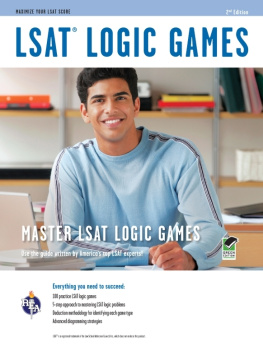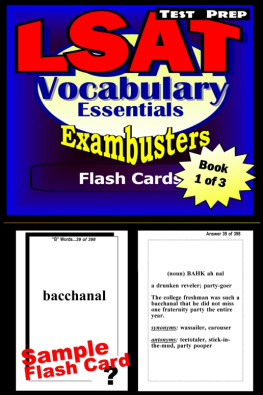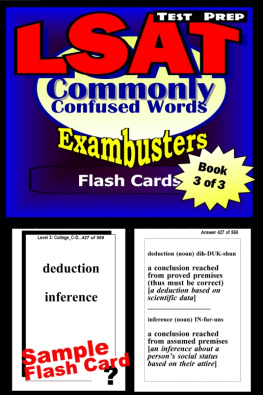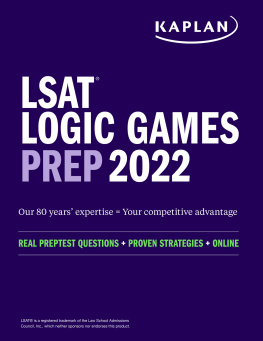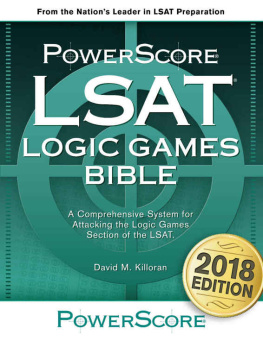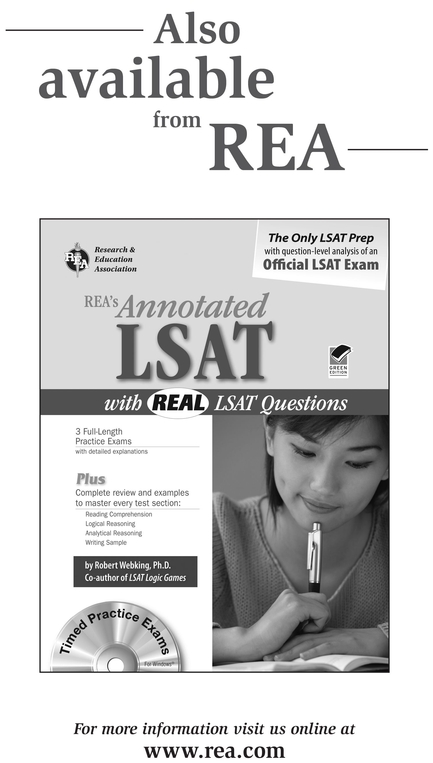In addition to our authors, we would like to thank Larry B. Kling, Vice President, Editorial, for his overall guidance; Pam Weston, Publisher, for setting the quality standards for production integrity and managing the publication to completion; Michael Reynolds, Managing Editor, for managing revisions; Diane Goldschmidt, Associate Editor, for post-production quality assurance; and Weymouth Design for designing our cover.
Copyright 2011 by Research & Education Association, Inc.
Prior edition copyright 2006 by Research & Education Association, Inc. All rights reserved. No part of this book may be reproduced in any form without permission of the publisher.
At REA were committed to producing books in an Earth-friendly manner and to helping our customers make greener choices.
Manufacturing books in the United States ensures compliance with strict environmental laws and eliminates the need for international freight shipping, a major contributor to global air pollution.
And printing on recycled paper helps minimize our consumption of trees, water and fossil fuels. This book was printed on paper made with 10% post-consumer waste . According to Environmental Defenses Paper Calculator, by using this innovative paper instead of conventional papers, we achieved the following environmental benefits:
Trees Saved: 6 Air Emissions Eliminated: 1,288 pounds
Water Saved: 1,161 gallons Solid Waste Eliminated: 380 pounds
For more information on our environmental practices, please visit us online at www.rea.com/green
PREFACE: WHY IS THIS SO CONFUSING?
Students and other readers sometimes comment that the problems presented in the analytical reasoning section of the LSAT (A.K.A. the logic games) seem overly confusing and unnecessarily difficult. Sometimes people ask, Why didnt you just say... or Why cant you say everything the same way?
The answer to those questions and the source of the apparent confusion has to do with understanding the structure of the LSAT Logic Games, and, by extension, an essential element of the LSAT test itself. Remember, the goal of each logic game is to improve the ability to work with the LSAT analytical reasoning section efficiently and effectively.
Consider this example from an actual LSAT test:
Nine different treatments are available for a certain illness: three antibioticsF, G, and Hthree dietary regimensM, N, and Oand three physical therapiesU, V, and W For each case of the illness, a doctor will prescribe exactly five of the treatments, in accordance with the following conditions:
If two of the antibiotics are prescribed, the remaining antibiotic cannot be prescribed.
There must be exactly one dietary regimen prescribed.
If O is not prescribed, F cannot be prescribed.
If W is prescribed, F cannot be prescribed.
G cannot be prescribed if both N and U are prescribed.
V cannot be prescribed unless both H and M are prescribed.
This information sets up a situation, then asks six questions about it. Take a look at the list of conditions. The first two have to do with the number of treatments that might be prescribed from two of the categories. The second of these conditions is quite clear: There is exactly one dietary regimen prescribed.
However, the first condition does not seem nearly so clear. It defines a relationship among the antibiotics: If two of the antibiotics are prescribed, the remaining antibiotic cannot be prescribed. Spend a little time analyzing that statement and you will see that it is much simpler than it appears, and means: the doctor does not prescribe all three antibiotics. The statement leaves the possibility that the doctor prescribes one or two of the antibiotics, but not all three. Understanding the situation requires the ability to make that analysis.
The remaining four conditions establish relationships among some of the treatments that the doctors prescribing follows. But it takes a bit of time to sort out exactly what these conditions are, since they are expressed differently from one another. The second condition is the most clear and straightforward of the four. It says that, If W is included, then F is not.
That seems pretty plain, so lets try to make the other three conditions clear in the same way. The first of the three conditions includes two negatives, so you can clarify it by removing those negatives, revealing that it means exactly this: If F is included then O is also included. Now follow through this form with another condition, which involves multiple items and seems to reverse the order of the statement. It turns out to be: If both N and U are included, then G is also included. The relationship in the last condition is in a different format and uses the word unless. But you can make it clearer when you put it in the same form as the other three conditions, which makes it into two statements: If V is included, then H is included, and If V is included, then M is included. This analysis takes these seemingly confusing conditions and makes a list that is easier to apply:
If F is prescribed then O is also prescribed.
If W is prescribed, then F is not prescribed.
If both N and U are prescribed, then G is not prescribed.
If V is prescribed, then H is prescribed.
If V is prescribed, then M is prescribed.
Applying all of these conditions at the same time will be a challenge, but it helps to understand exactly what they mean.
In this example, we stated all the conditions in the form originally used by the second condition (a positive), but they could also be stated in the form of the first condition and mean exactly the same thing. Stated that way, they become negative:
If O is not prescribed then F is not prescribed.
If F is prescribed then W is not prescribed.
If G is prescribed then N is not prescribed or U is not prescribed.
If H is not prescribed then V is not prescribed.
If M is not prescribed then V is not prescribed.
This way of stating the conditions seems more cumbersome, but it means exactly the same thing. We could also state it several other ways. Suppose we put all the conditions in the form using unless. Then they become:
O is prescribed unless F is not prescribed.
W is not prescribed unless F is not prescribed.
Unless G is not prescribed it cannot be that both N and U are prescribed.
V cannot be prescribed unless both H and M are prescribed.
To most people, this would be the most confusing of the three formats, but the statements mean exactly the same thing as in the other two examples.
In this LSAT problem, a mix of formats is used, which creates opportunity for error in interpretation. Those errors have to be avoided to be able to understand the situation and to demonstrate that the consequences of the conditions include things like O could be prescribed without F or N and G could both be prescribed, deductions that are likely to crop up in the questions.

